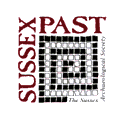Sussex Archaeological Collections: Relating to the history and antiquities of the counties of East and West Sussex
Sussex Archaeological Society, 2000. (updated 2022) https://doi.org/10.5284/1000334. How to cite using this DOI
Data copyright © Sussex Archaeological Society unless otherwise stated
This work is licensed under the ADS Terms of Use and Access.
Primary contact
Jaime
Kaminski
Sussex Archaeological Society
Barbican House
169 High Street
Lewes
BN8 1YE
Resource identifiers
- ADS Collection: 285
- DOI:https://doi.org/10.5284/1000334
- How to cite using this DOI
Myth and reality in the representation of resorts
BRIGHTON AND THE EMERGENCE OF THE 'PRINCE AND FISHING
VILLAGE' MYTH 1770-1824
by Sue Berry

Many localities have two histories, the actual and the mythical. Myths can become so well-established that they overshadow the history of a place, as demonstrated in the first part of this study. In this instance the myth is that Brighton was a fishing village that from the 1780s was transformed into a resort by the patronage of the Prince of Wales. Having shown how much influence myths can have on our perception of the history of a place, a short review of our understanding of the history of Brighton's successful development as a resort between 1730 and 1783 disproves the claim that Brighton was a fishing village when the Prince arrived. The study ends with an examination of how the myth evolved. The myth began in the 1770s with Dr Richard Russell transforming Brighton from a fishing village. A subsequent but less popular version was that the Duke of Cumberland's arrival resulted in the town's development. Finally, the Prince of Wales became the subject of the story.





